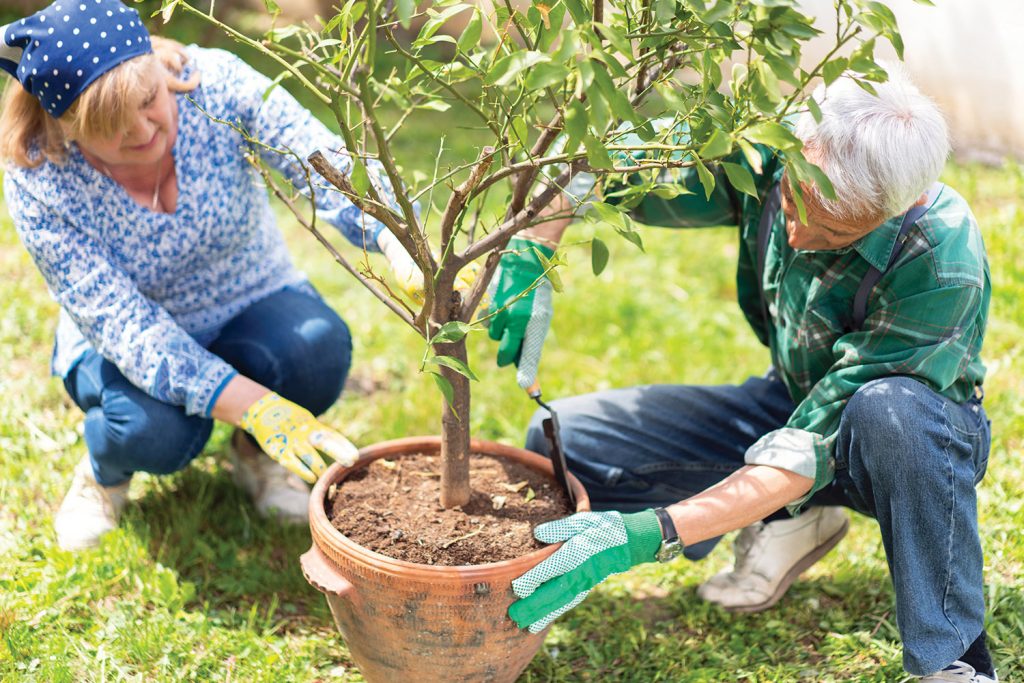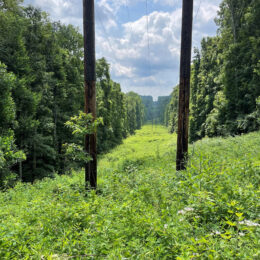
Early autumn is often considered the best time to plant a tree. But no time is a good time if you don’t have a plan and take precautions.
Not only do dangers lurk for the person at planting time, but without a plan, a tree can cause problems for nearby power lines, people who rely on the power, and the longevity of the tree itself.
“You can’t spell plant without a plan!” is what your electric co-op wants its DIY’ers to remember when landscaping.
“Before you start planting, we encourage our members to call 811 at least five days ahead of time,” said Dan Raines, line superintendent and safety director, “Never assume the utility lines are buried deeper than you plan to dig.”
Digging into a buried power line, or any buried utility, with power equipment or a hand shovel, can cause serious injury or death. A single call to 811 will bring representatives out from affected utilities to mark where their respective utility lines are.
Once you know where to plant to avoid underground utilities, figure out the prime planting spot away from any overhead utility lines. If you are planting a small tree that will grow no larger than 25 feet tall, planting it 25 feet away from power lines is a safe distance. If the mature tree is 25-40 feet tall, plant it 40 feet away from power lines. The bigger the tree, the farther it should be. So, if the tree is expected to grow more than 40 feet high, it should be planted 60 feet away from utility lines.
Without planning for the ultimate, mature height of the tree you are planting, nearby overhead electrical lines may be compromised. Keeping your tree away from utility lines not only keeps you safe, it keeps it safe as well. Trees planted too close to underground lines can suffer root damage. Trees planted too close to overhead lines need regular pruning, damaging the tree and its appearance. If your tree is within the right-of-way of the utility and deemed a danger to the power line, the utility may need to remove it.
Your electric co-op works hard to provide you reliable electric service. You can help by following these few simple guidelines when managing the trees on your property. Being aware of these dangers and how to avoid them can keep you, your home and the trees safe.
Five tips for safely planting a tree
- Call 811 to have underground pipes and utilities marked at least a few working days before digging. Knowing their locations helps you dig safely, and planting a safe distance away will help prevent damage from roots.
- Create a basic plan, or a sketched diagram, before you begin planting to avoid future troubles. Using the information from the underground utility locator service will be a big help in setting some guidelines.
- Consider a tree’s potential growth when choosing its location. If it’s expected to grow higher than 15 feet, choose a spot 25 to 50 feet away from utility lines and your home.
- Plant with energy savings in mind. Not only can you upgrade your landscape, you can decrease your energy use too. Trees can keep your home cool in the summer and warm in the winter. Just be sure you’re aware of power line location and avoid structural damage.
- Call your local cooperative if you need help trimming a tree away from power lines. This will keep you and everyone around you much safer.



